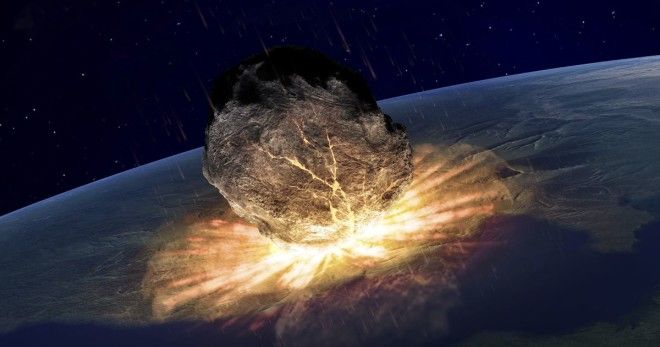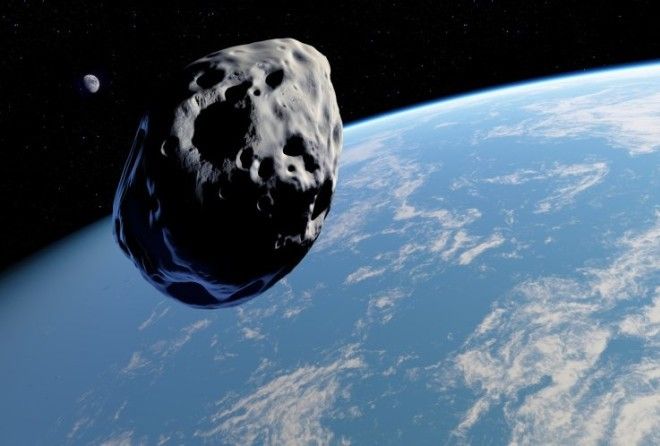This week, academics from Lawrence Livermore National Laboratory released a study which concluded that Nasa would be unable to use a newly-designed spaceship to nudge Asteroid Bennu onto a new course which ensures it stays well clear of our planet.
Now the lab is finalising research which details a ‘nuclear option’ in which the space rock will be blasted with weapons of mass destruction.
Metro.co.uk has been told that the results of simulations exploring whether Bennu can be nuked are complete and about to be filed for publication in an academic journal.
The study released this week related to a Nasa craft called HAMMER, which is designed to push asteroids onto new path – the ‘preferred option’ – or hit them with a nuclear blast.

This graphic shows the size of Asteroid Bennu compared to a tiny ‘planetary defender’ spaceship (Credit: Lawrence Livermore National Laboratory)
This research said HAMMER would be unable physically move Bennu unless it was launched decades before Bennu’s possible date of impact, or dozens were sent into space at the same time.
Nuking the doomsday space rock could be humanity’s only chance of survival – as long as it was carried out properly.
The safest approach doesn’t necessarily involve blowing it to bits, but detonating a nuke at a distance from the asteroid.
This would bombard the space rock with X-rays and vapourise the surface, creating a ‘rocket-like propulsion as the vaporized material is ejected from the object’ and pushing Bennu into a new trajectory.
Of course, this would have to take place a long time before Bennu is due to hit Earth to guarantee our safety.
However, nuclear weapons could allow us to save ourselves at the last minute.

‘Successful disruption requires ensuring that the asteroid pieces are sufficiently small and well-dispersed so that they pose a much-reduced threat to the Earth,’ said Megan Bruck Syal, a physicist at Lawrence Livermore National Laboratory and member of the Planetary Defence Team.
‘Disruption carried out as late as tens of days before impact can still be very effective in reducing the total damage felt by Earth. Previous work by our research group has shown that the impacting debris is reduced to less than 1% of its initial mass by disrupting the asteroid, even at these late times.’
Bennu has a 1 in 2,700-chance of striking Earth on Sept. 25, 2135, and it is estimated that the energy unleashed in this impact would be equivalent to 1,200 megatons, which is 80,000 times the energy released by the Hiroshima bomb.
At 500 metres wide, it is as wide as five football fields and weights around 79 billion kilograms, which is 1,664 times as heavy as the Titanic.

